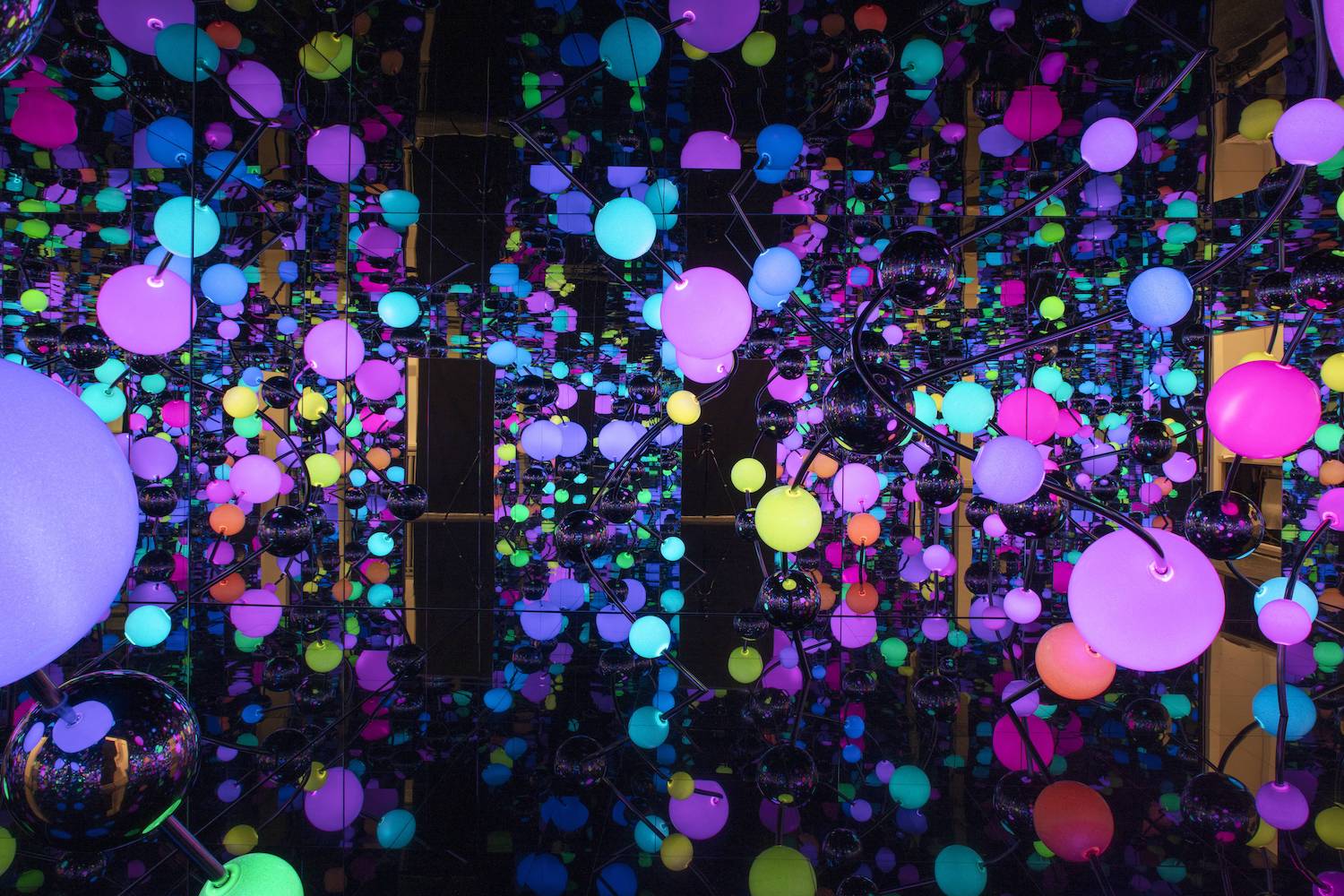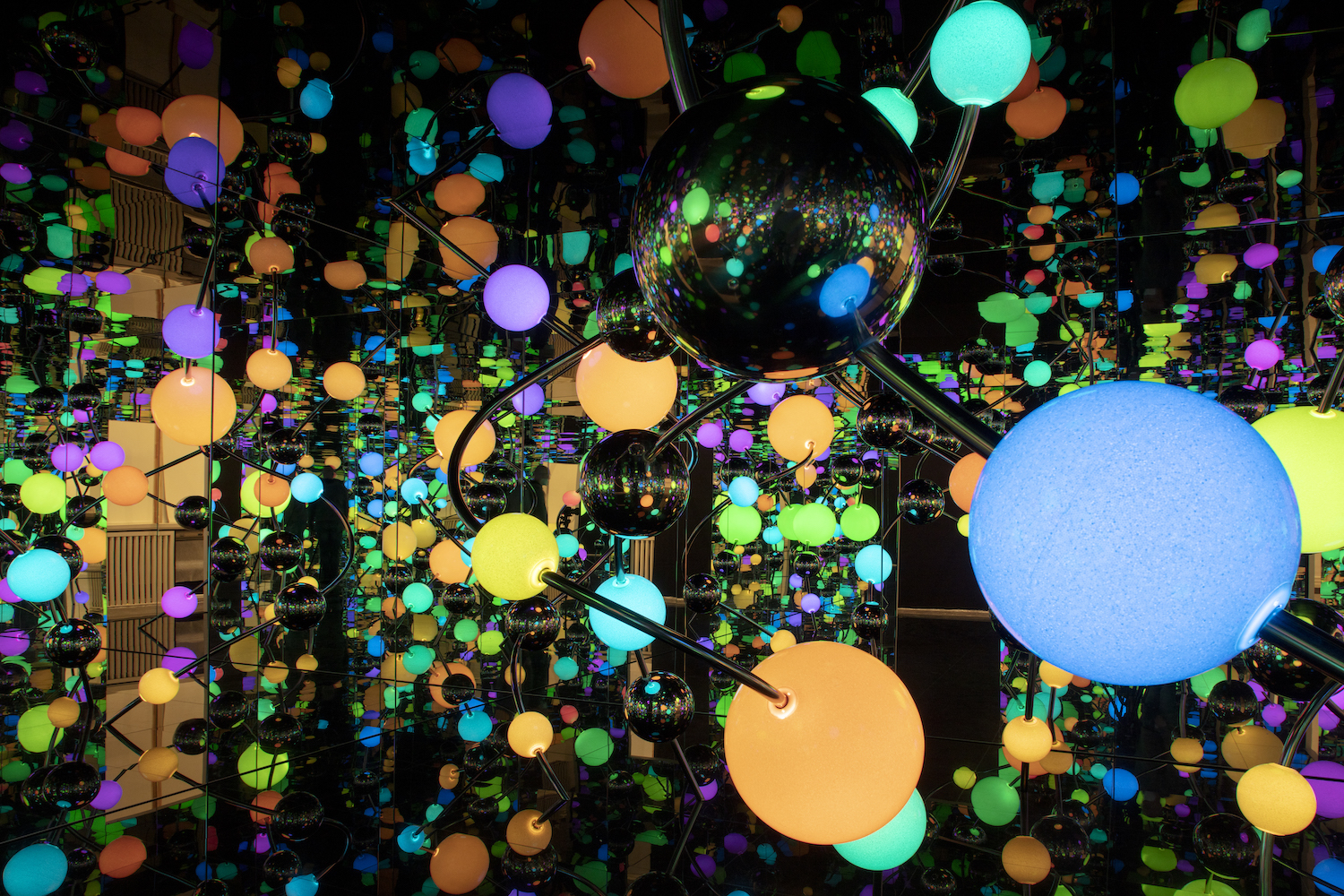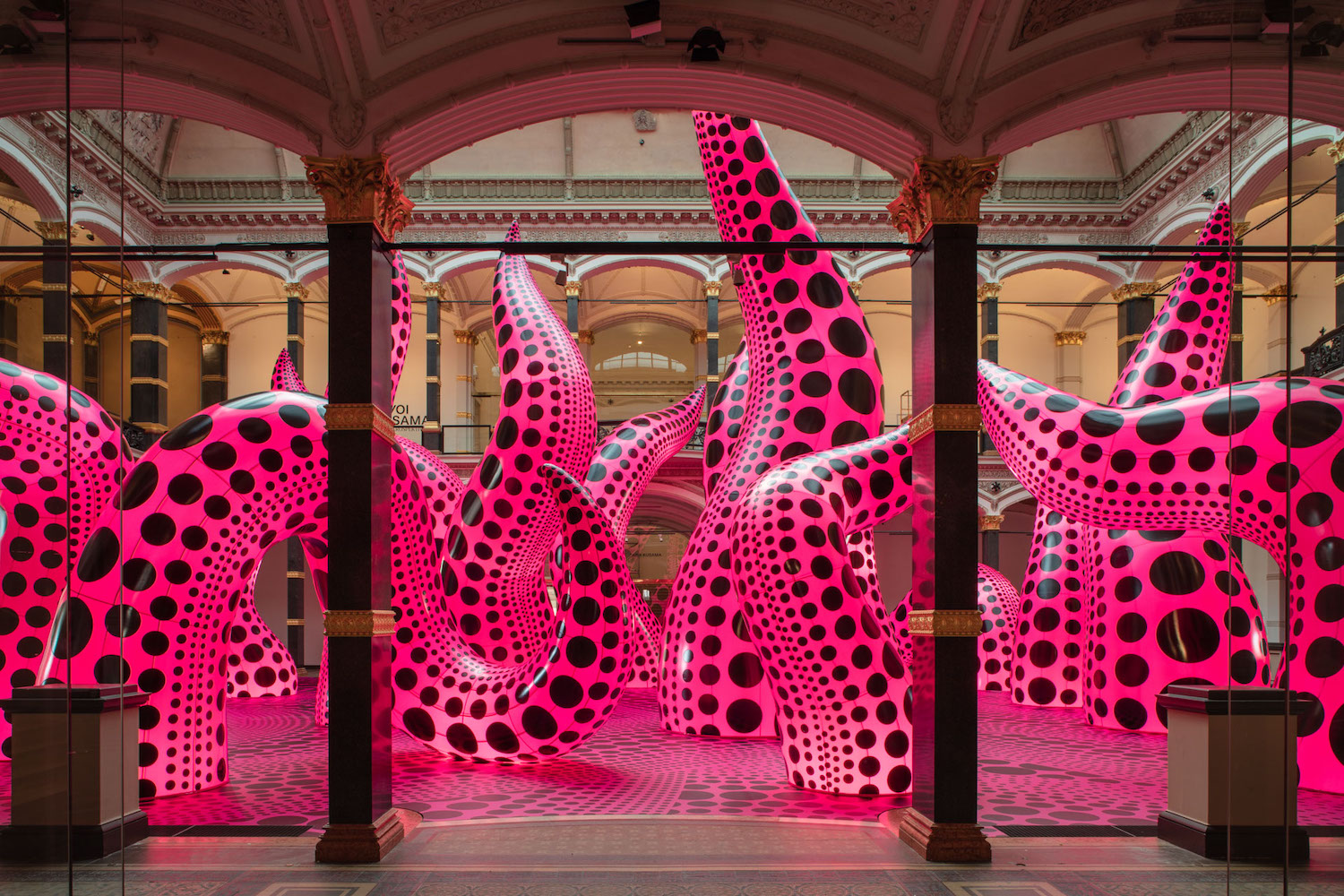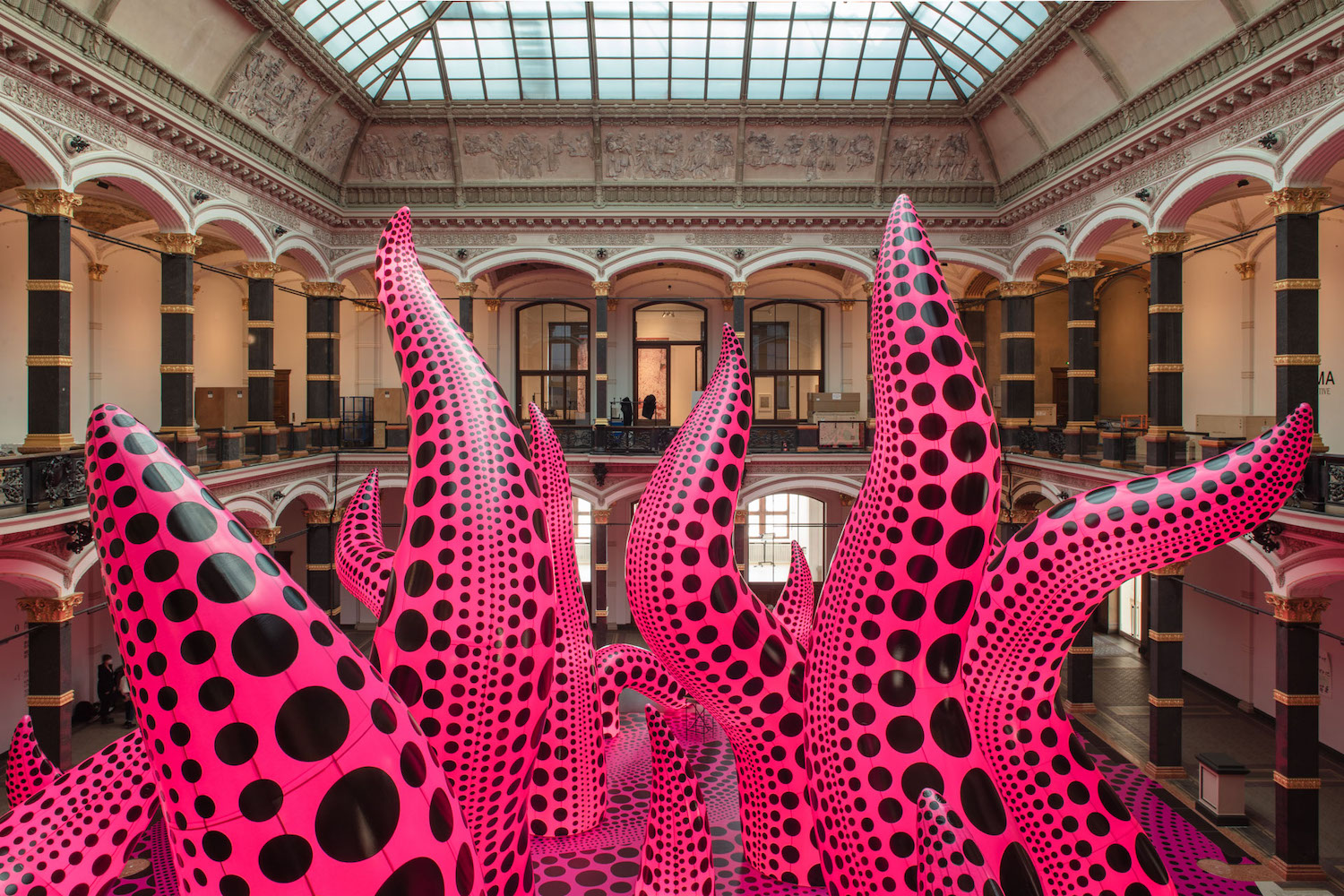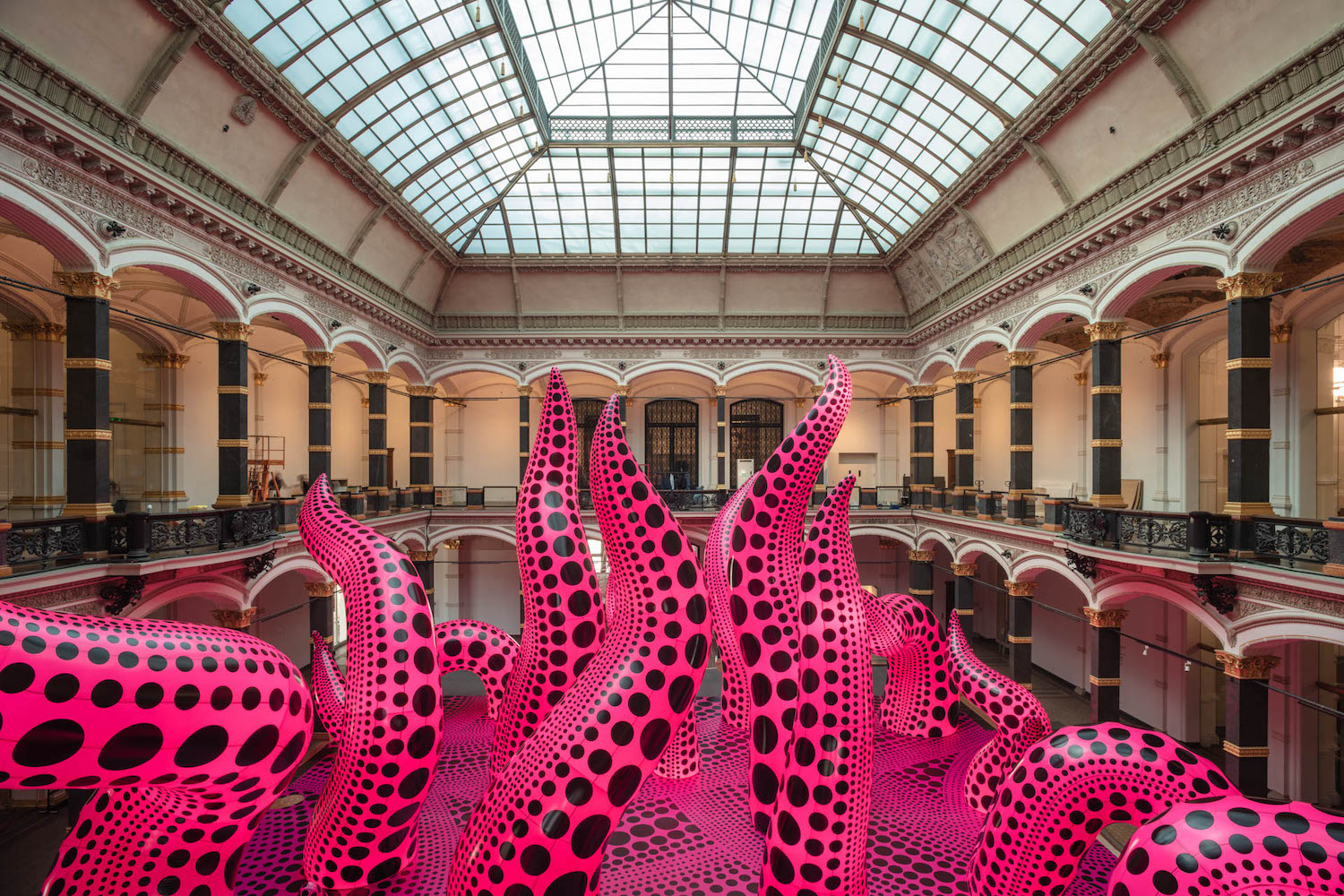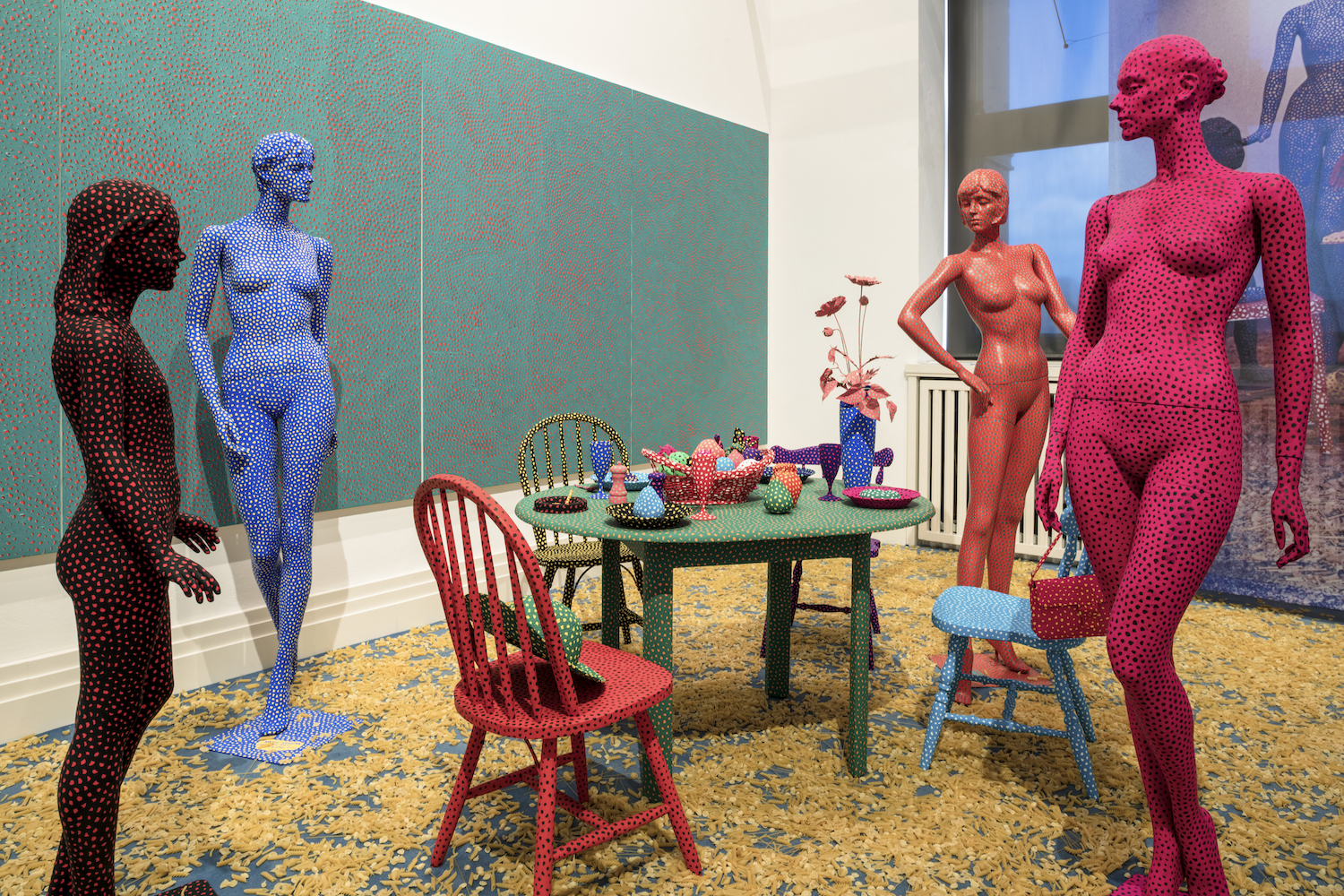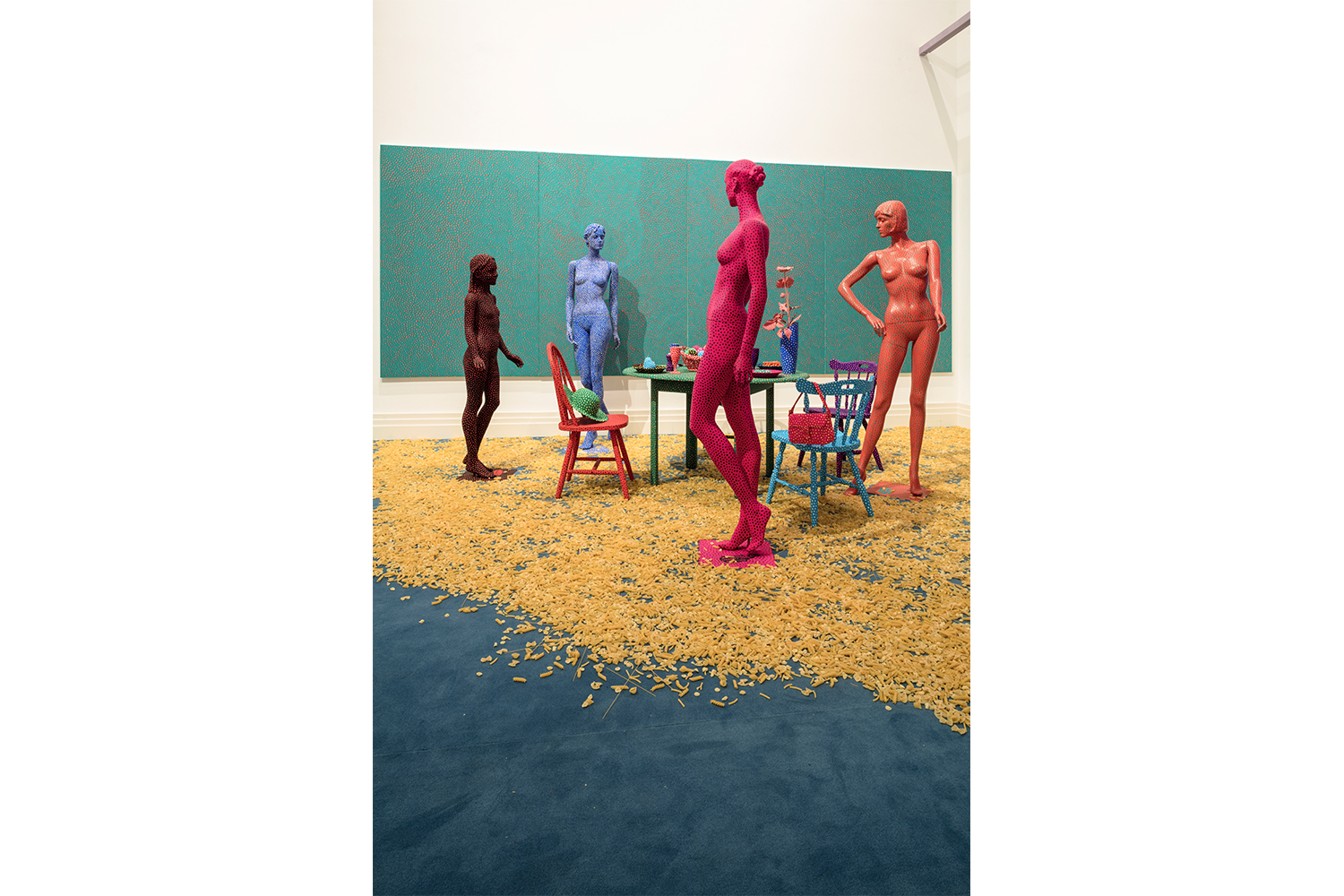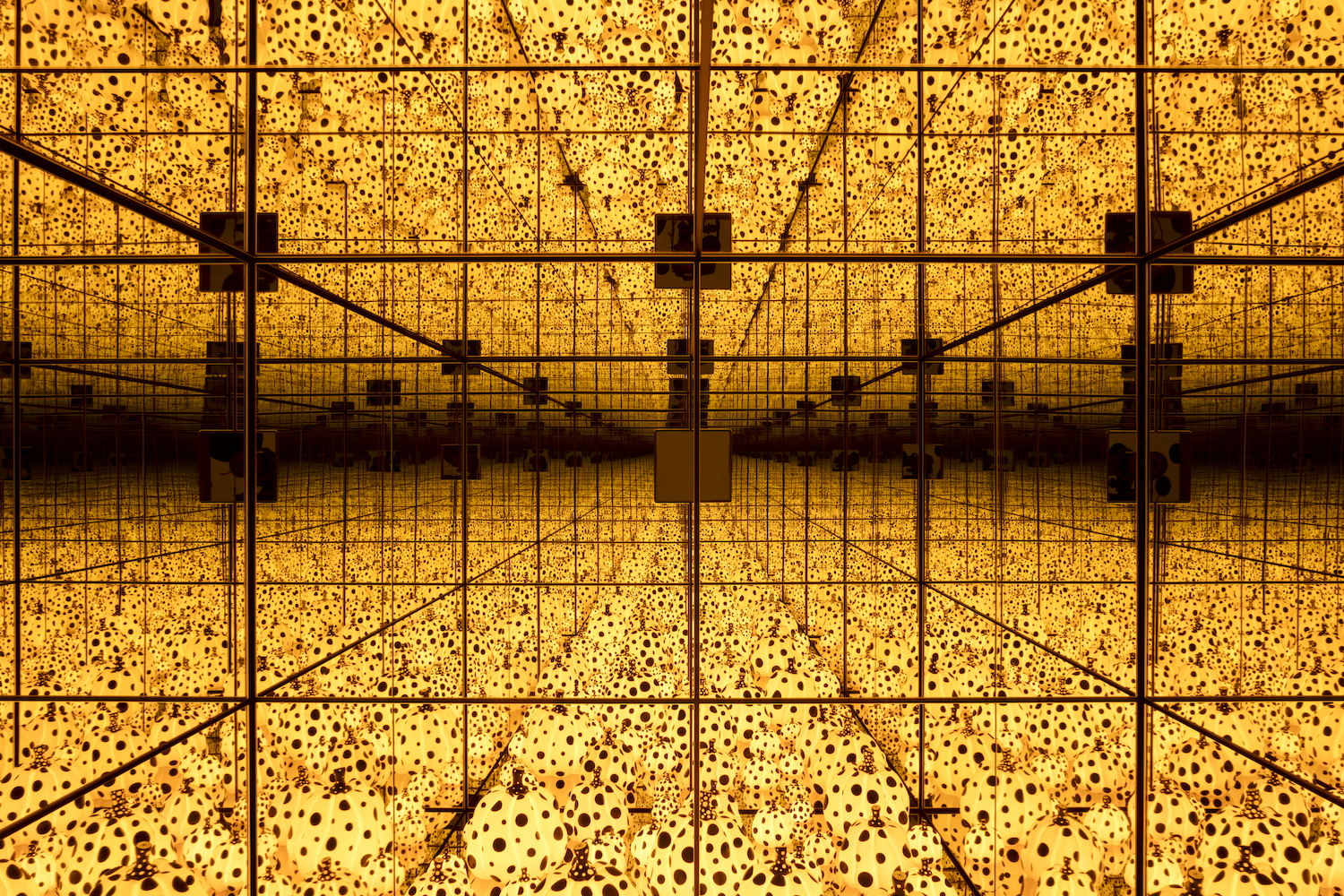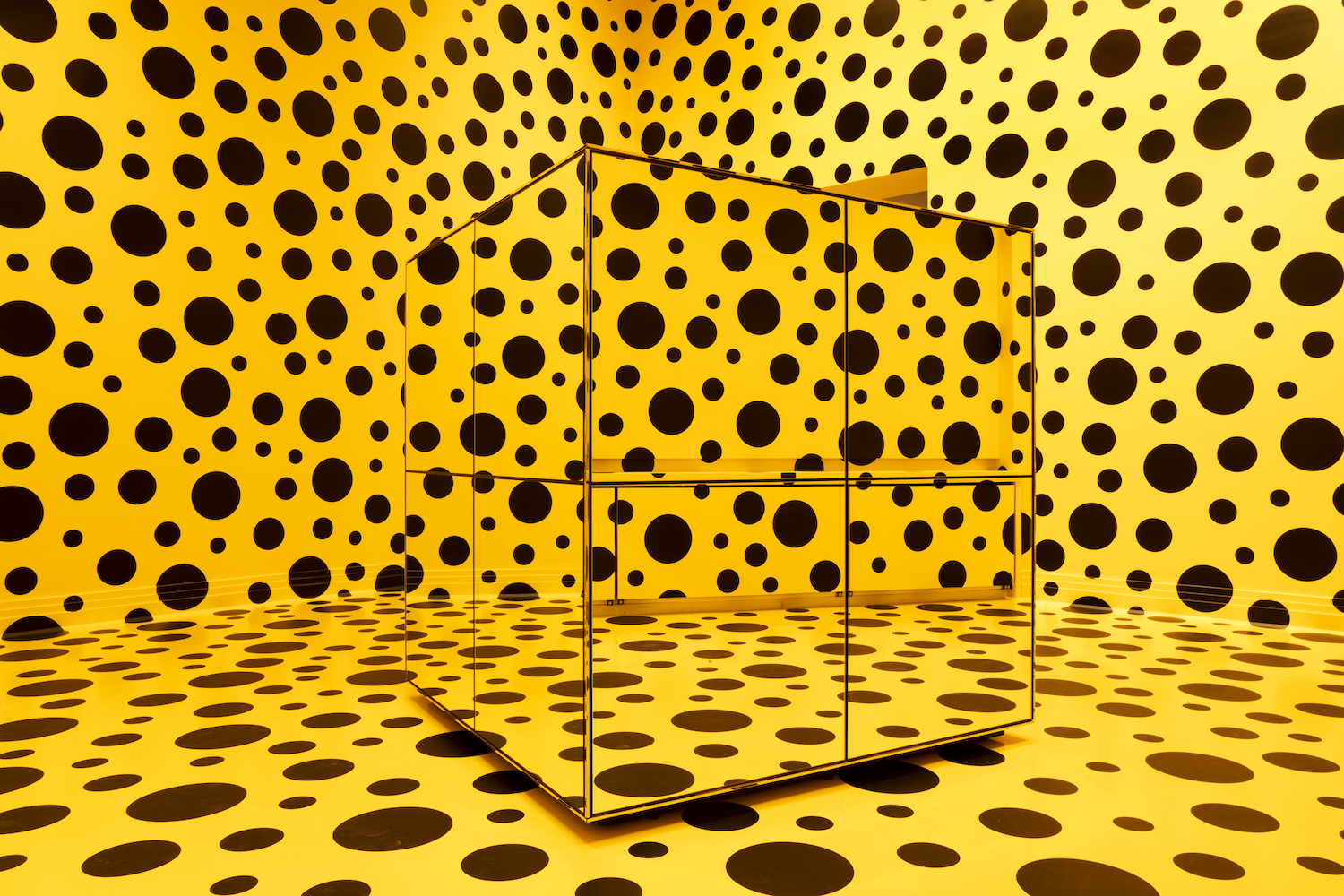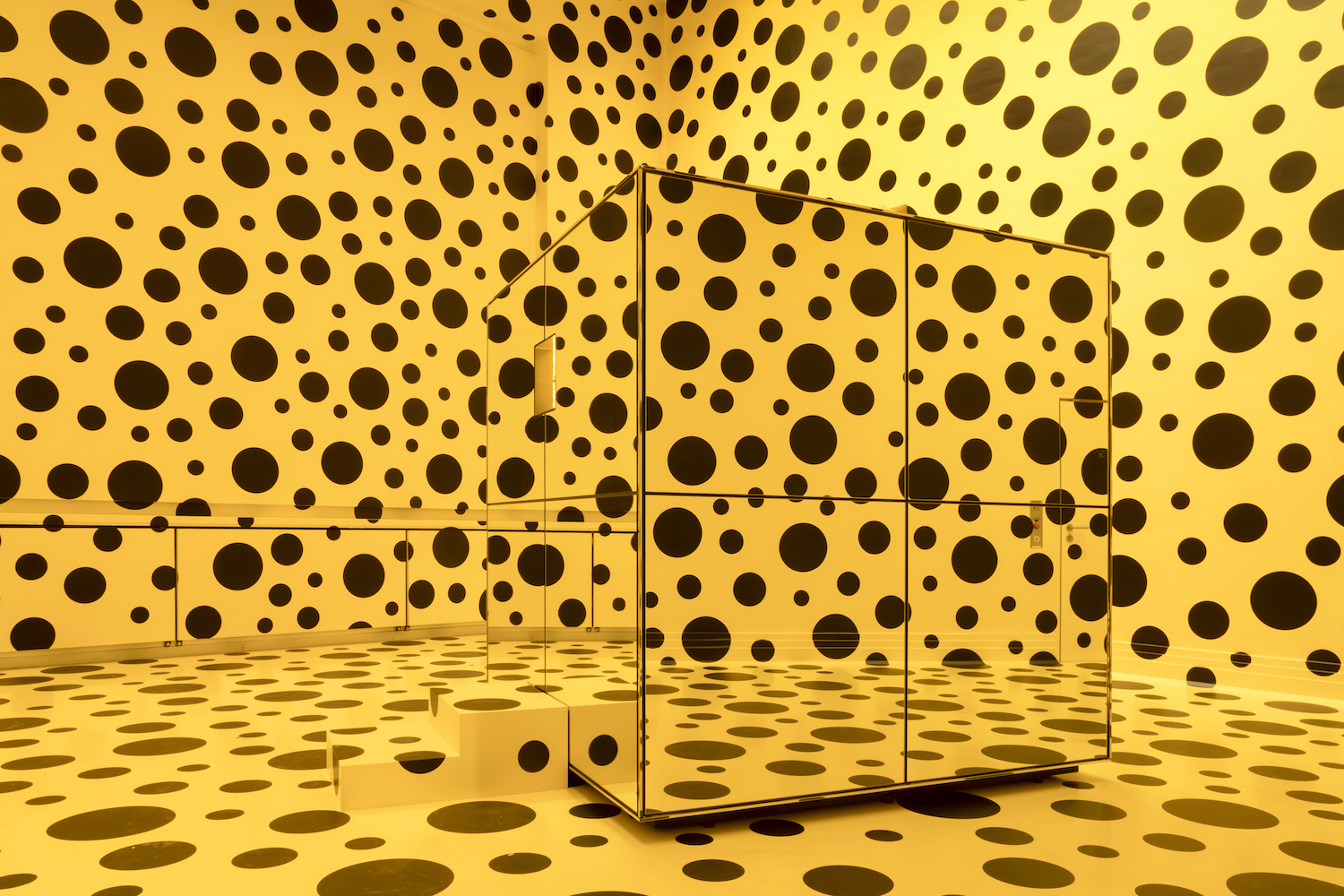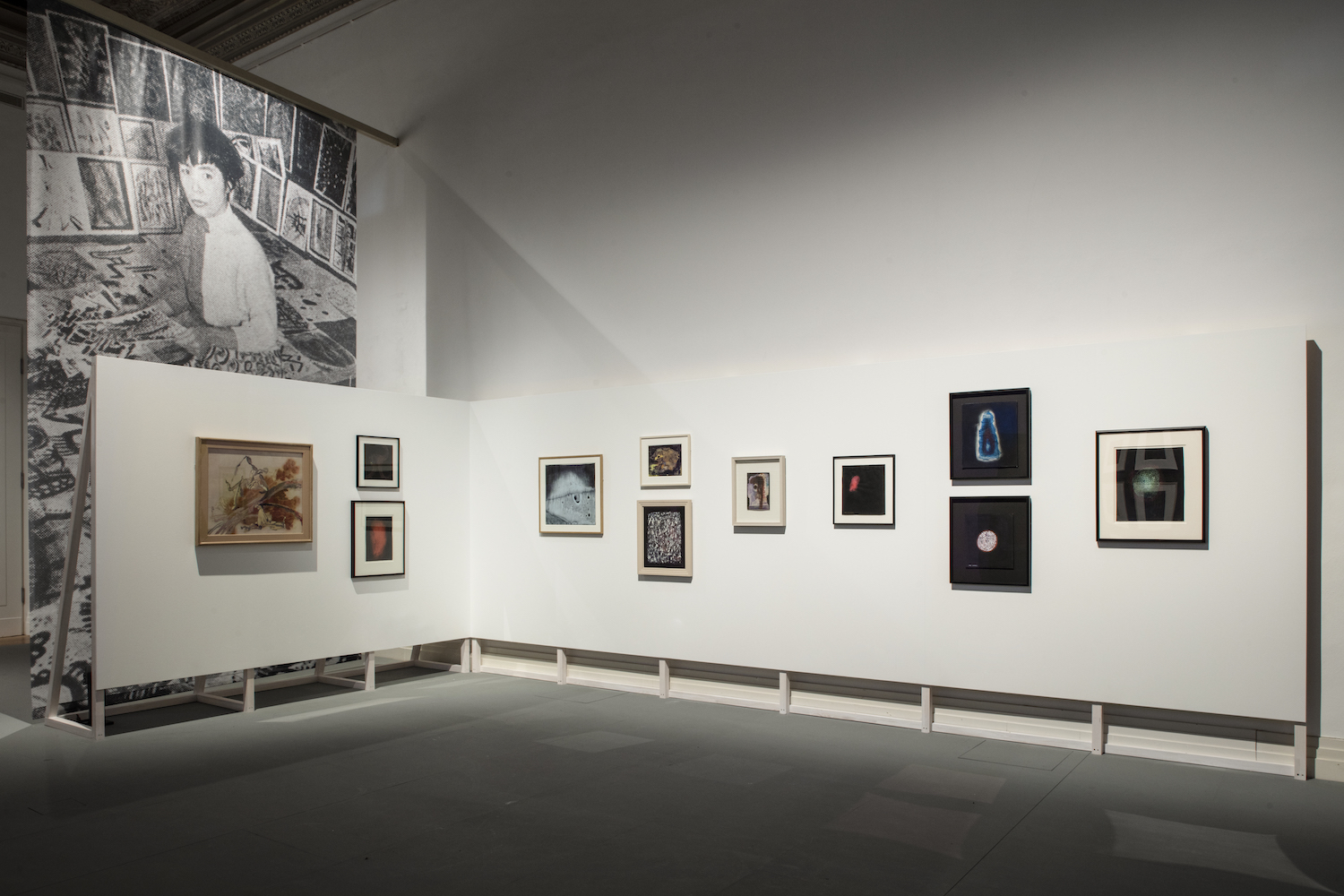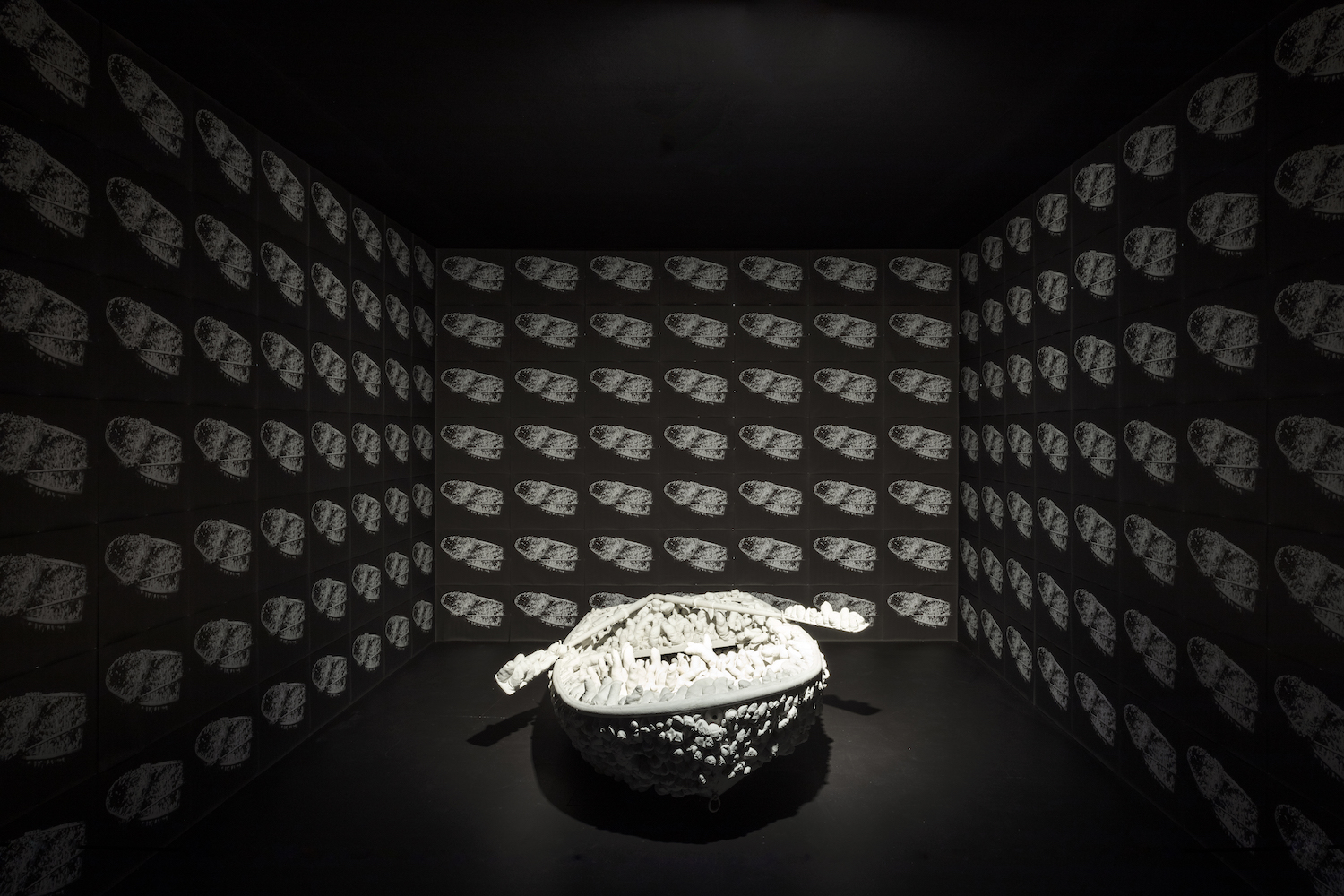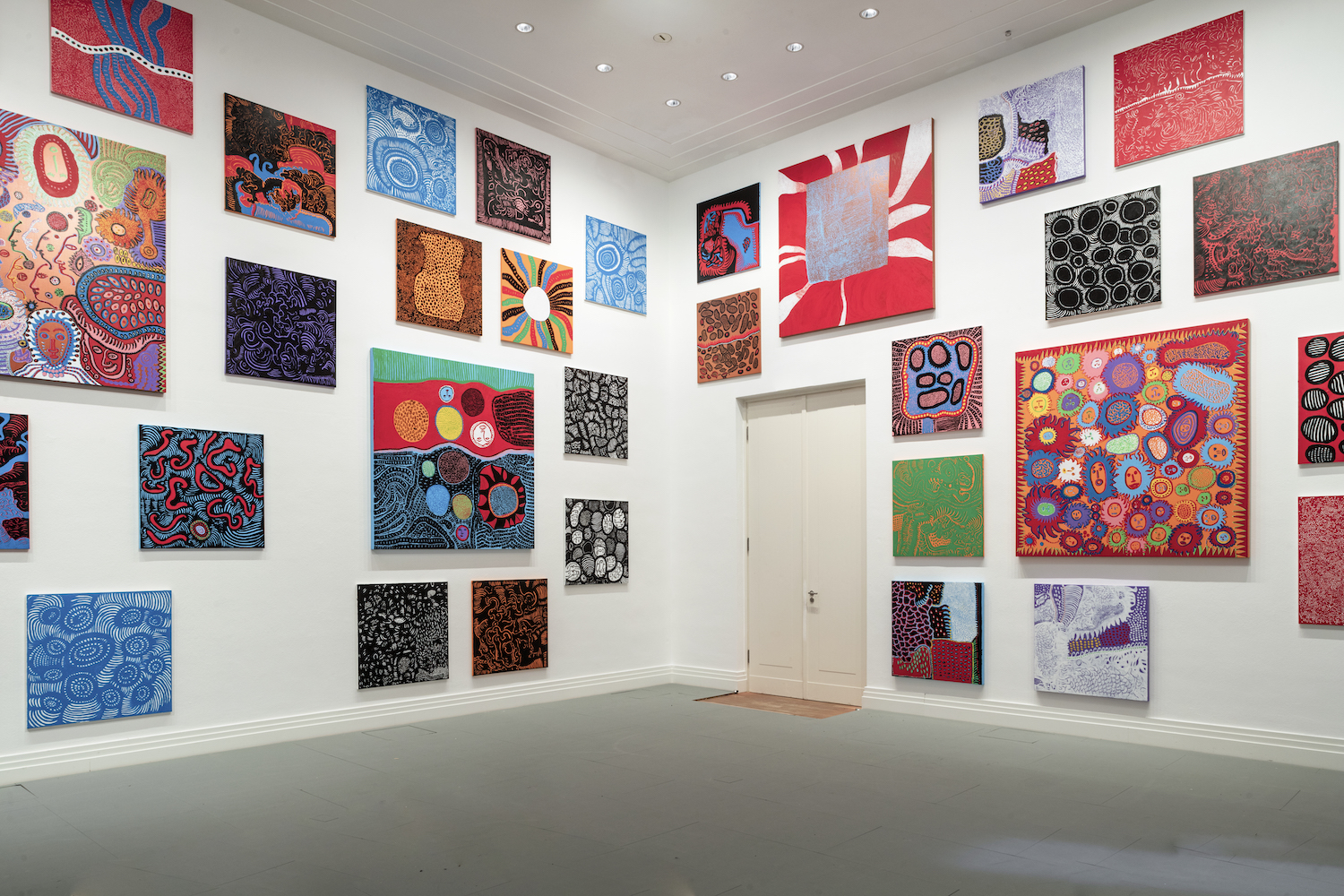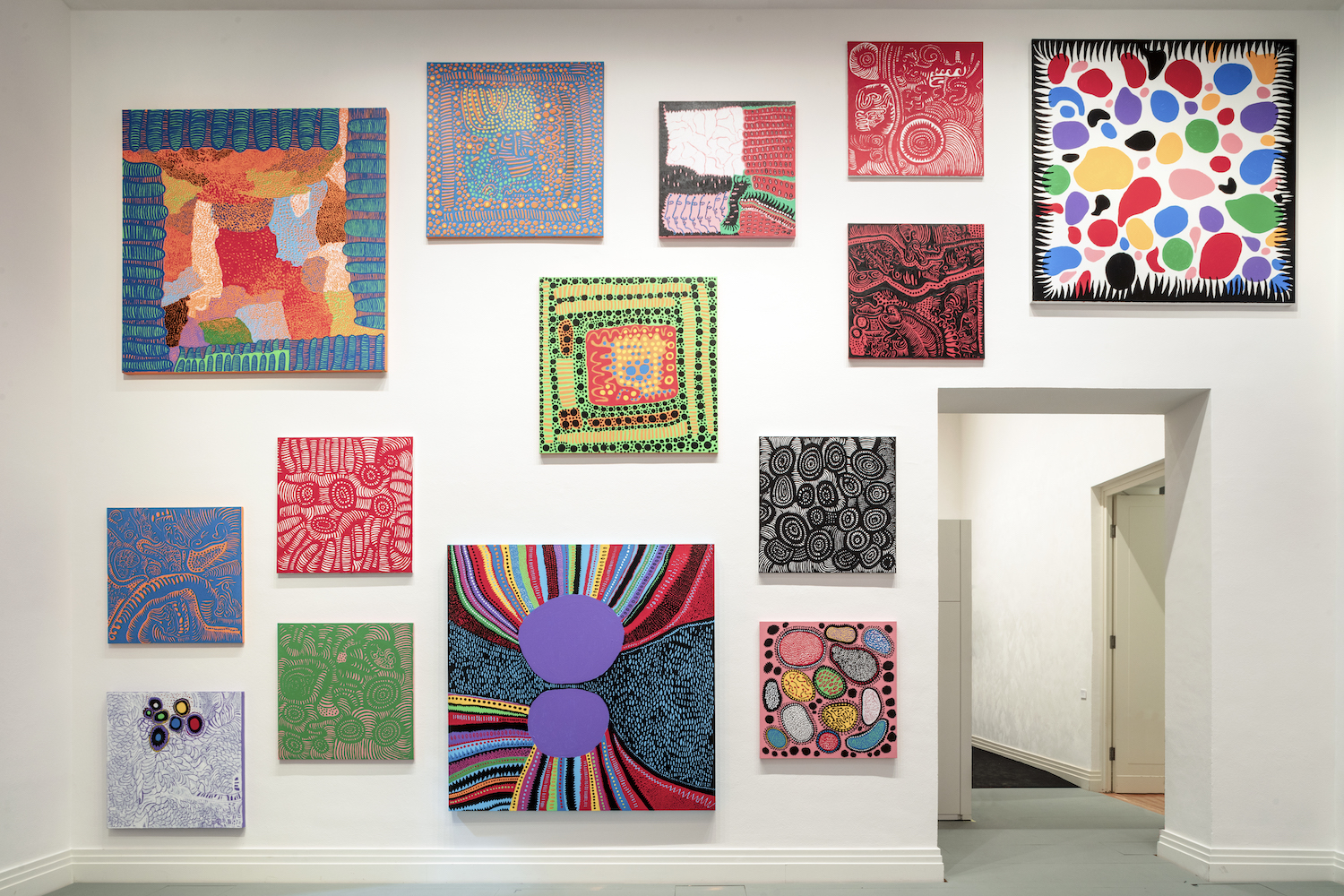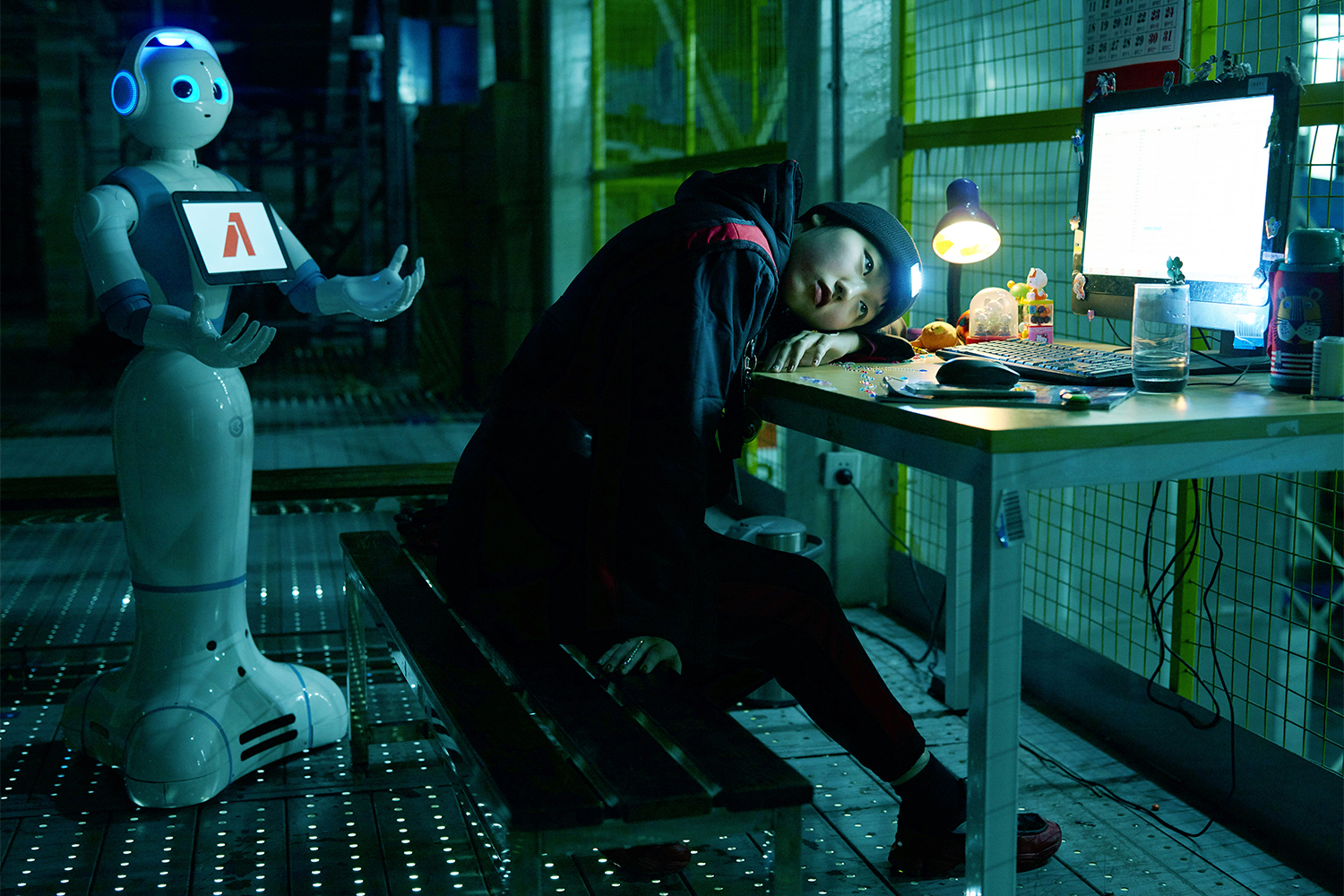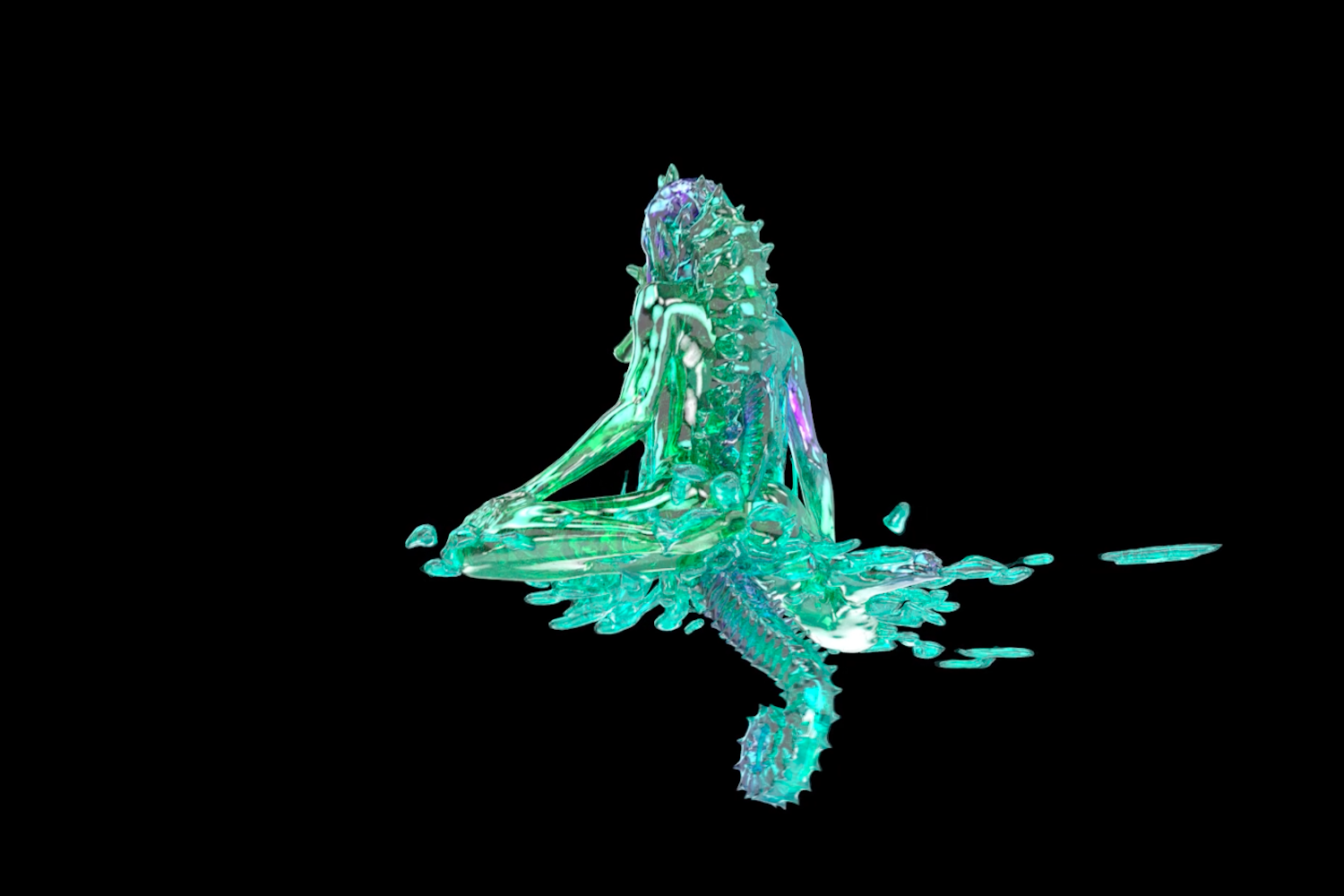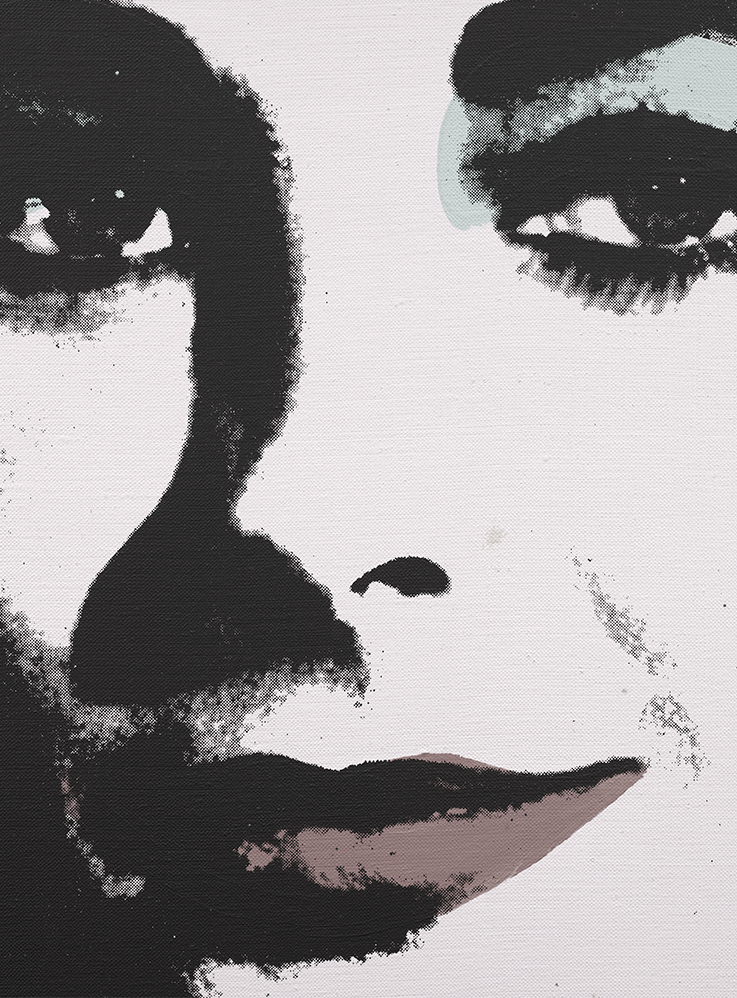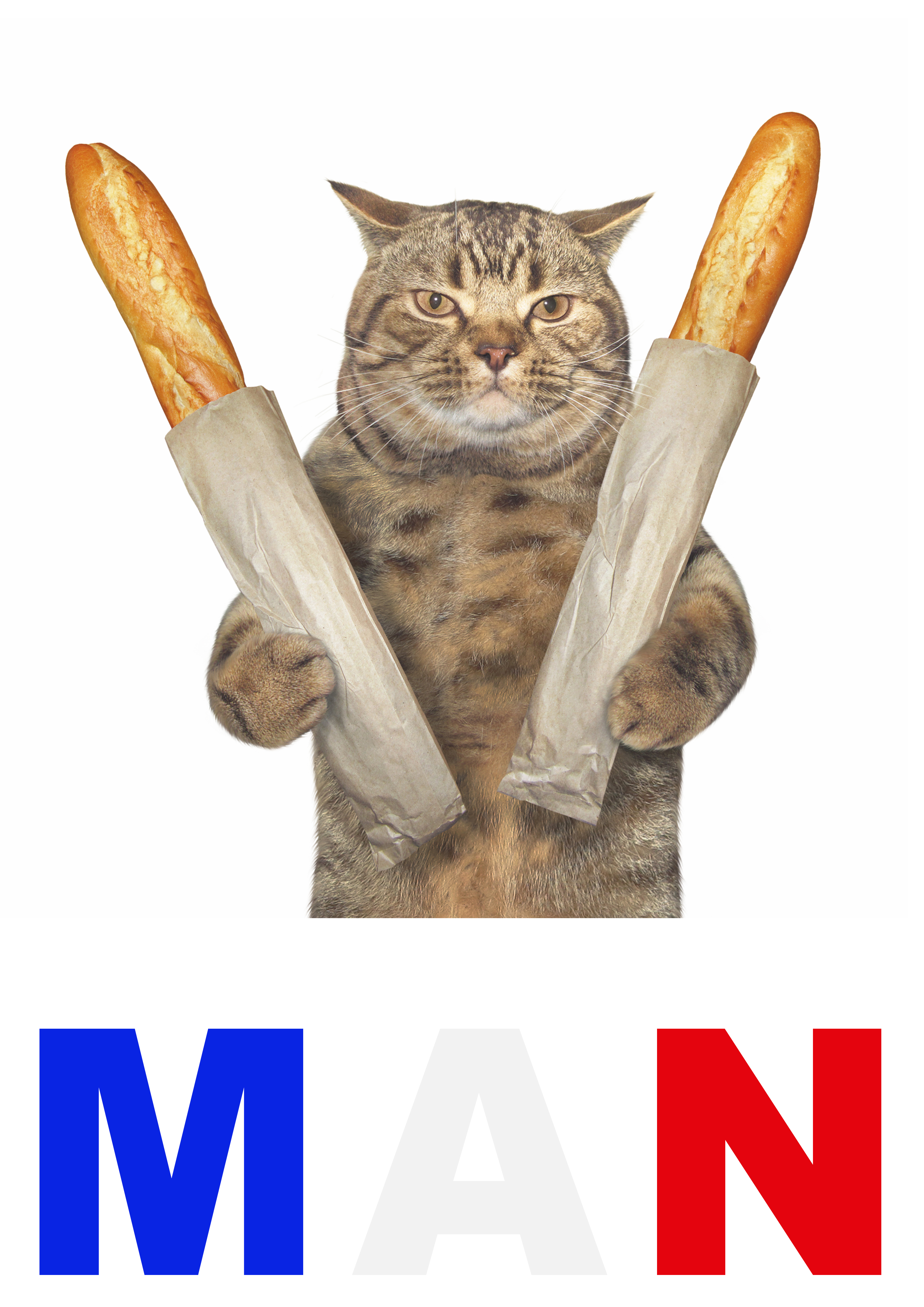Designed exclusively for Gropius Bau’s atrium, “A Bouquet of Love I Saw in the Universe” invites visitors to get lost in a forest of softly glowing, neon-pink tentacles. Yet, bathed in the subtle hum of its hidden air pumps, this inflatable installation doesn’t quite fulfill the promise of awe-inspiring immersion we have become used to associating with the name of Japanese artist Yayoi Kusama.
Gropius Bau is hosting Kusama’s first large-scale retrospective in Germany. Though the Brechtian side effect of the installation, which lends the show its title, is most likely unintentional, it encapsulates how “A Bouquet of Love I Saw in the Universe” may fail to provide the immersive distraction we so desperately seek in the second year of the pandemic — while succeeding, in other unexpected ways. If Kusama’s first major retrospective, touring from Centre Pompidou to Reina Sofia, Tate Modern, and the Whitney Museum of American Art between 2011 and 2012 (intensely documented on social media, and followed by Kusama’s collaboration with Louis Vuitton) induced a pleasant sense of vertigo, Stephanie Rosenthal’s curatorial approach favors historical perspective over immersive disorientation.
Unpacking Kusama’s oeuvre with unprecedented comprehensiveness, Rosenthal’s chronological circuit around Gropius Bau’s atrium provides an overview of the creative development of an artist who (today ninety-two years old) has been making art for seventy years. Documentation of eight historical exhibitions constitute a key element of this show; meticulous juxtapositions of artworks and archival materials (timelines, floor plans, poster drafts) shed light on Kusama’s career milestones, starting as early as 1952 with the artist’s debut in her hometown of Matsumoto. “A Bouquet of Love I Saw in the Universe” takes a rather dry, didactic stance, noticeably dimming the sense of wonder the various “Infinity Mirror Rooms” on display might otherwise instill. Meanwhile, unimposing works, such as Kusama’s early watercolors, start to shine. Glowing clusters of dots and bubbles emerge against black backgrounds like microscopic images of cells, revealing a little-known creative nucleus of Kusama’s work (The Moon, The Woman, both 1953). A small gouache recalls the still-recent catastrophe of Hiroshima (Atomic Bomb, 1954).
Upon moving to the New York in 1958, and into a studio building where she would meet Donald Judd, Kusama quickly found herself at the epicenter of the Western avant-garde. By 1963 the artist had developed tactility, immersion, and her continuous longing for transcendence as driving forces of her work. Kusama’s breakthrough installation Aggregation: One Thousand Boats Show (initially shown at Gertrude Stein Gallery and reconstructed at Gropius Bau) features a rowboat, stranded in a dark room with oars resting along its sides, covered with phallic stuffed-fabric protuberances (a type of assemblage Kusama would label “accumulations”). Staged photographs show the artist posing nude with the absurdly unusable vessel, processing her personal experiences of immigrant and female vulnerability, as well as channeling the new creative influence of New York’s Happenings, performance art, and Pop art movements.
Throughout the Gropius Bau’s show, black-and-white clips of 1960s TV new reports convey a sense of Kusama’s skillful self-promotion as the “High Priestess of Polka-Dots” we know today, but also — and maybe more importantly — portray her activist involvement in a number of social movements that decisively informed our present-day reality. The counterculture of the 1960s, the women’s movement, and the gay rights movement provided the social matrix of the sexual revolution, which campaigned for the normalization of premarital sex, free love, and an overcoming of sexual taboos. Beginning in 1967, Kusama organized art interventions in New York City’s public parks and squares, staging nude anti-Vietnam war protests, “orgy parties,” and “naked body festivals.” In 1968, the artist founded the Church of Self-Obliteration to officiate (as her press release claimed) the first homosexual wedding ever performed in the United States. In the framework of the Gropius Bau show, however, what’s left of these adrenalin-charged interventions is little more than some mute, shaky 16mm clips (Love In Festival, 1969, Central Park, New York).
In Rosenthal’s reconstructions of historical exhibitions, Kusama’s art struggles to come to life. But especially where the curatorial arrangements of “A Bouquet of Love I Saw in the Universe” are anticlimactic, something important becomes felt: art doesn’t have to be all about participation in the here and now. It can be just as much about inhabiting the gaps between then and now — taking in the full scope of historical distance.

